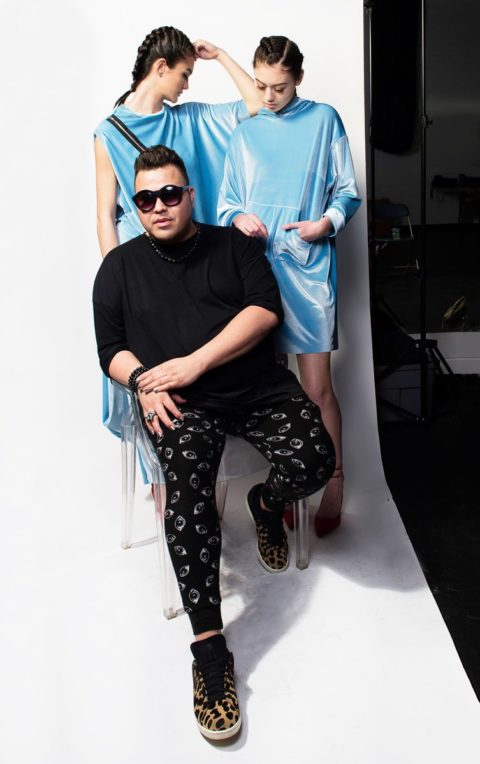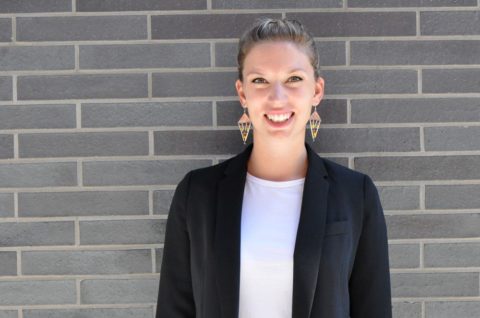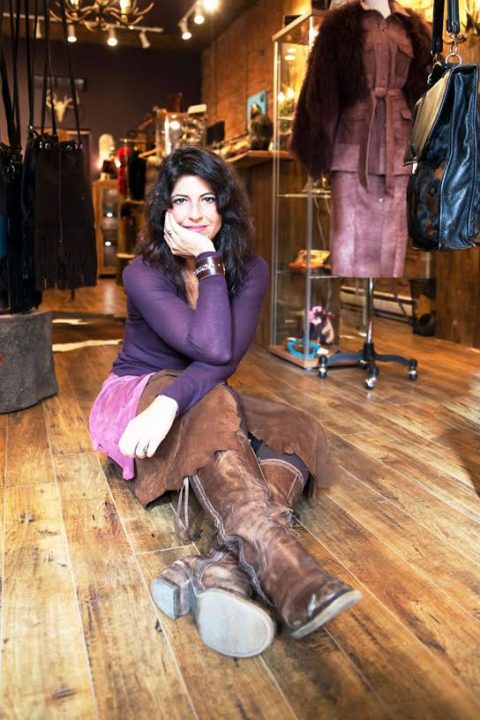3 stylish people on what it’s like to be Aboriginal in Canada today


In the eight years since former Prime Minister Stephen Harper offered a full apology on behalf of the Canadian people for the residential schools crisis, it would be nice if we could tout the great strides that Aboriginal people have made. The reality is Canada’s first and fastest growing population continues to face serious struggles: violence, substance abuse problems, high incarceration rates and devastating suicide numbers.
However, last year newly minted Prime Minister Trudeau committed to a public inquiry into murdered and missing Aboriginal woman, so there is some hope that humble apologies will soon be replaced with problem-solving policy. But in areas of fashion and activism, First Nations people are leaving their mark and making bold, startling moves while finding beauty and humour in their past and present.
With National Aboriginal Month drawing to a close, we spoke to three First Nations people about where they’re at personally and where they’re headed.

Sarah Midanik, Executive Director, Native Women’s Resource Centre of Toronto
Tell us a bit about your role in the community as it pertains to your job?
The NWRCT is a community-based organization dedicated to providing resources and support to urban indigenous women and their families. An important part of my job is to ensure that NWRCT is constantly evaluating our services to ensure that we are best able to meet client needs. For instance, we just secured funding to build out a program to support victims of sexual violence. Another very important aspect of my role is ensuring the voice of indigenous women is heard within our community. I am fortunate to sit on a number of committees and advisory boards within all levels of government to ensure that indigenous women are represented and accounted for.
And what about personally?
Working within our indigenous community is my passion. I come from a long line of strong female role models and family members that continue to work tirelessly to do good work within our communities. I make the joke that doing this type of work is “in my blood,” but it truly is.
Is this a good time to an Aboriginal person in Canada?
This is a good time to own our indigenous identities and be proud of who we are. Indigenous peoples are Canada, and we are different. It is important to understand that even the word “indigenous” represents many different identities and cultures within our First Nations, Inuit and Métis peoples.
What are the most important issues to highlight this month, in your opinion?
It is important for Canadians to fully understand the history of indigenous people in Canada—the atrocities of residential schools, the cultural genocide carried out by our government and the devastating effects this history has had on our communities. It is important that this history is taught in school curriculum and that inter-generational trauma is understood. Learn about the Truth & Reconciliation Commission and the resulting Calls to Action. Read about the inquiry into Murdered and Missing Indigenous Women. Reconciliation is more than just a buzzword and is worthy of participation from all Canadians.

Angela DeMontigny of DeMontigny
Where did you grow up?
I was born on Vancouver Island and then grew up in North Vancouver and White Rock, B.C. I’m Cree/Metis.
How do you incorporate your culture into your work?
I always use my culture as a foundation for my design inspiration whether it’s obvious or very subtle. It could be incorporating bold, graphic designs or traditional beadwork into my collections or the simple use and manipulation of the hides I use or the cutting detail, but it’s always there. My main goal has always been to provide a different and contemporary aesthetic of native fashion than most people expect. I want people to see that we are not living in a time warp from 300 years ago and that we have evolved as modern people but still draw upon our cultural heritage.
How has being First Nations shaped you and your world view?
I’m considered 1 of 3 distinct indigenous groups in Canada. There are First Nations, Metis and Inuit. Being an indigenous person provides me with a deep and vast cultural reservoir and set of beliefs which influence not only my view of the world and my community but also the universe. There is no separation between art, culture, spirituality and business—everything is connected and included.
This month is National Aboriginal Month. In your opinion, where are we at?
I think we’re at a much better place right now where positive dialogue is now possible. Due largely in part to the findings of the Truth & Reconciliation Commission, there is now more opportunity to create activities to promote cultural understanding, add essential, historical information to our educational curriculums and new ways for our people to have their voices heard.
Where are we headed?
I see us starting to work together to not only correct historical injustices but most importantly to create respectful ways of working together. This is why it’s so important for native designers throughout North America to stand up against the cultural appropriation that has been happening for far too long and to be able to protect and be recognized for our unique and authentic work like anyone else.
If you have a family, what would you like them to know about your culture?
I have two children, both are teenagers now, but they have been brought up knowing exactly who they are with their heritage and spiritual practices and know the challenges they face as indigenous youth. They are already strong advocates for sharing their culture with others in order to promote understanding and inclusiveness. I’m extremely proud of them.

Derek Jagodzinsky of LUXX Ready to Wear
Tell us about your background?
I’m Woodland Cree but I’m from Whitefish Lake First Nation, which is my band. It’s in northern Alberta. I have relatives that live there and my mom lives about an hour away. I moved to Edmonton in Grade 10, finished high school, then went to the University of Alberta where I acquired a Bachelor of Design—I had taken fashion design courses and was working with designers. I did my internship in NYC before starting my label in 2011. I’m actually taking my masters right now in Industrial Design at the University of Alberta.
Why do you incorporate your Aboriginal roots into your designs?
It’s something that I’m supposed to do. It has never been portrayed properly from a design sense. If you think about Chinese fashion, someone like Vivienne Tam embodies the mix of tradition and technology, and I feel that’s really important. [I take] classic elements from fashion and then traditional elements from First Nations and mix them together to create something new and exciting. It’s 2016 and we’re essentially stylists. Everything has been designed I feel, and it’s the fusion of tradition and technology; the hybrid can be so stunning and new. At the end of the day, when I inject all this different cultural stuff into my collection I’m actually researching and learning for myself at the same time. It’s an education thing, too, for me and for my clients. There’s obviously wonderful First Nations Women who buy my clothes, but my clothes aren’t just for Aboriginal people; they’re for everybody.
What’s next for LUXX?
My new collection is going to be called “The Land.” I’m collaborating with a photographer that does some landscape stuff and then also I have this other photographer that takes pictures of animals mixed with Cree. I’m really excited for this season. I want to do something different and very Canadian in a sense. Everyone has their own idea of what is Canadian because everyone has a different mindset because they’re all different people, right? It’s what it is to be like modern indigenous.
Is this a good time to an Aboriginal person in Canada?
It’s the best time to be an Aboriginal person in Canada because people are getting rights back and people are really taking notice. I feel like 2016 is the time for Aboriginal people to shine.







